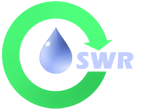Sustainable Water Resources
SWR Research Example: China
Impact of Soil Conservation Practices on Water Resources in the Loess Plateau, China
Human-induced soil erosion currently impacts approximately 1.6 million km2 globally - about 13% of terrestrial land surface - and reduces world agricultural productivity by about 10%. Soil conservation measures (Figures 1 and 2) to mitigate soil degradation for food production, water quality, and carbon sequestration are therefore necessary. However, these measures can markedly alter the hydrologic cycle by changing partitioning of water fluxes at the land surface.
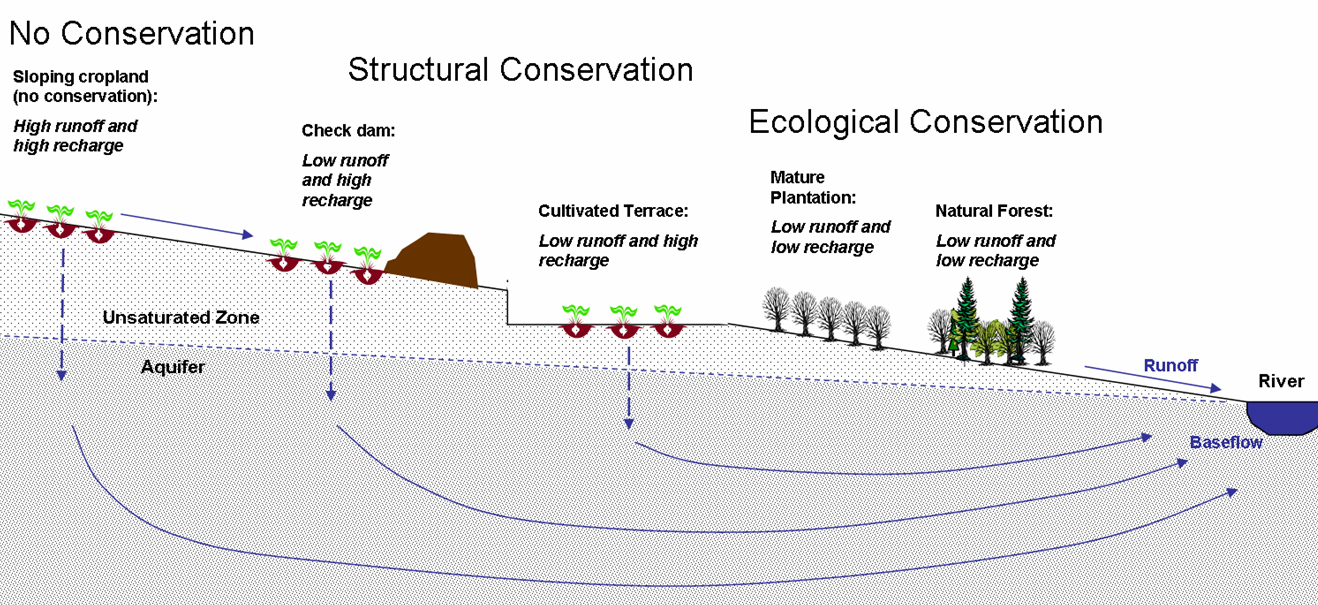
Figure 1. Conceptual overview of soil conservation impacts on recharge.
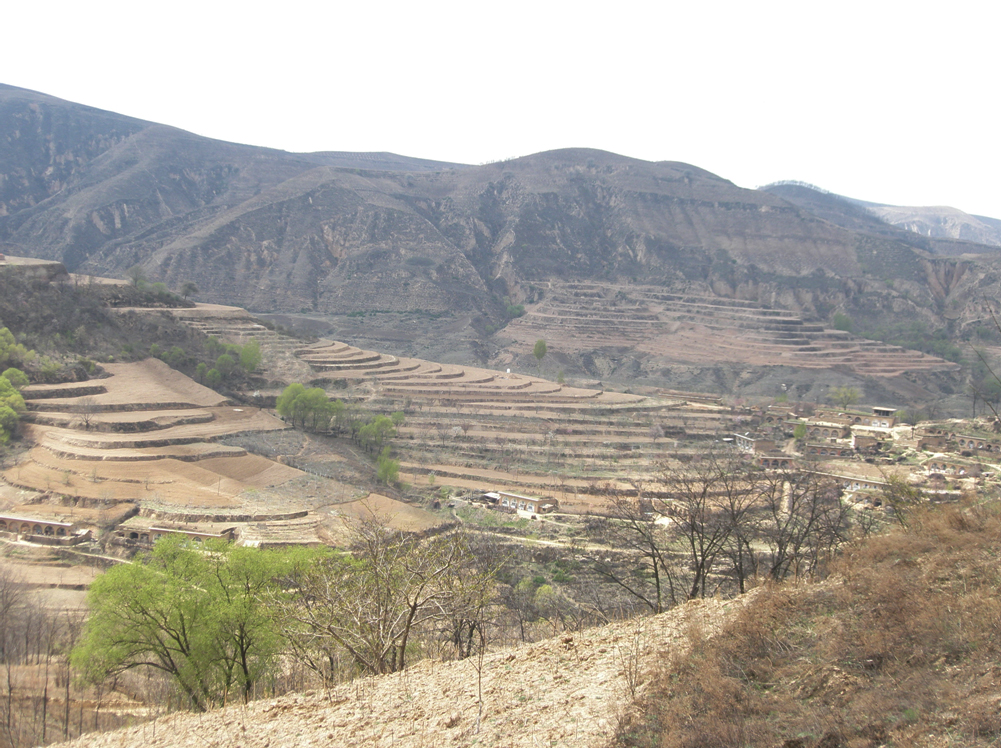
Photo of terracing typical of China's Loess Plateau.
However, these measures can markedly alter the hydrologic cycle by changing partitioning of water fluxes at the land surface. We collected subsurface tracer (chloride) data, surface geophysical data (Figure 2), and conducted numerical modeling of water flow and transport at Zhifangou catchment in China's Loess Plateau that record impacts of structural terracing and damming and ecological conservation measures on the water cycle over decades. Both structural and ecological conservation approaches have reduced runoff, but while structural measures have had a limited impact on groundwater recharge, plantations have cut off groundwater recharge (Figure 1). We show that groundwater recharge losses are responsible for up to 60% of river discharge reductions recorded in some catchments. Global expansion of soil conservation measures is expected considering climate change, increased crop and bioenergy production, and carbon sequestration; however, such measures need to be integrated with water resources management to minimize unintended consequences.
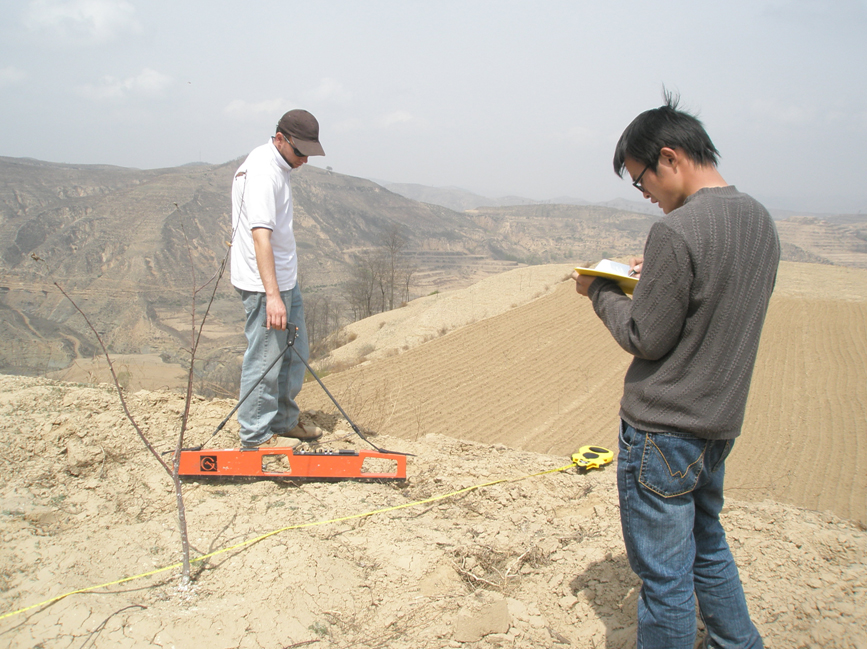
Photo of surface geophysical measurements using an electromagnetic induction meter (EM-38, Geonics Inc.) at one of the study sites.
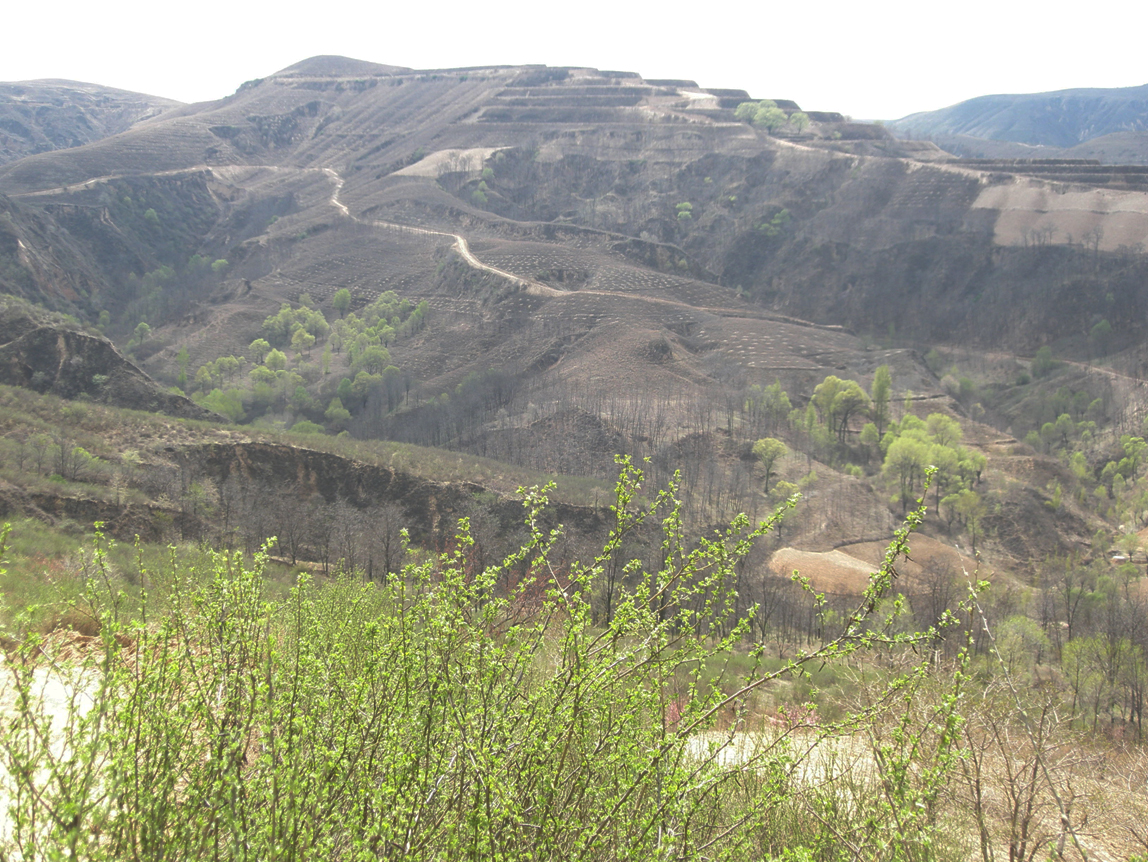
Photo of plantations in Loess Plateau.
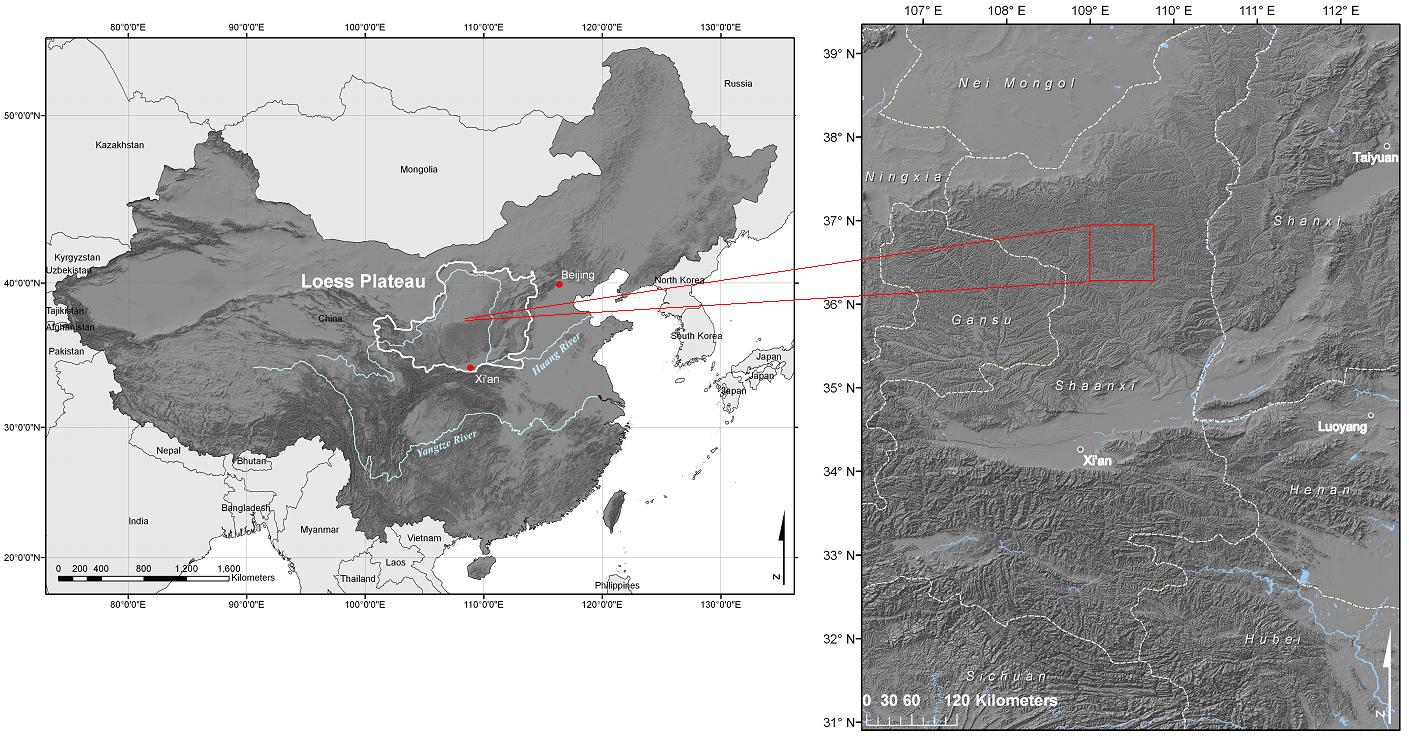
Location of Loess Plateau and field site.
